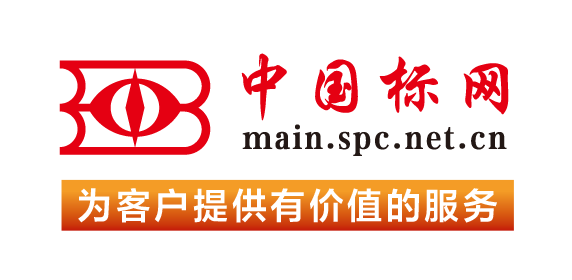【国外标准】 Standard Test Method for Determining Thermal Neutron Reaction Rates and Thermal Neutron Fluence Rates by Radioactivation Techniques
本网站 发布时间:
2024-02-28
开通会员免费在线看70000余条国内标准,赠送文本下载次数,单本最低仅合13.3元!还可享标准出版进度查询、定制跟踪推送、标准查新等超多特权!
查看详情>>
适用范围:
4.1 This test method can be extended to use any material that has the necessary nuclear and activation properties that suit the experimenter's particular situation. No attempt has been made to fully describe the myriad problems of counting techniques, neutron-fluence depression, and thick-foil self-shielding. It is assumed that the experimenter will refer to existing literature on these subjects. This test method does offer a referee technique (the standard gold foil) to aid the experimenter when they are in doubt of their ability to perform the radiometric technique with sufficient accuracy.4.2 The standard comparison technique uses a set of foils that are as nearly identical as possible in shape and mass. The foils are fabricated from any material that activates by an (n, γ) reaction, preferably having a cross section approximately inversely proportional to neutron speed in the thermal energy range. Some of the foils are irradiated in a known neutron field (at NIST) or other standards laboratory). The foils are counted in a fixed geometry on a stable radiation-detecting instrument. The neutron-induced reaction rate of the foils is computed from the counting data, and the ratio of the known neutron fluence rate to the computed reaction rate is determined. For any given foil, neutron energy spectrum, and counting set-up, this ratio is a constant. Other foils from the identical set can now be exposed to an unknown neutron field. The magnitude of the fluence rate in the unknown field can be obtained by comparing the reaction rates as determined from the counting data from the unknown and reference field, with proper corrections to account for spectral differences between the two fields (see Section 5). One important feature of this technique is that it eliminates the need for knowing the detector efficiency.4.3 This test method follows the Stoughton and Halperin convention for reporting thermal neutron fluence. Other conventions are the Wescott convention (followed in Test Method E481) and the Hogdahl convention. Practice E261 explains the three conventions and gives conversion formulae relating values determined by the different conventions. Reference (1)3 discusses the three thermal-neutron conventions in detail.1.1 The purpose of this test method is to define a general procedure for determining an unknown thermal-neutron fluence rate by neutron activation techniques. It is not practicable to describe completely a technique applicable to the large number of experimental situations that require the measurement of a thermal-neutron fluence rate. Therefore, this method is presented so that the user may adapt to their particular situation the fundamental procedures of the following techniques.1.1.1 Radiometric counting technique using pure cobalt, pure gold, pure indium, cobalt-aluminum, alloy, gold-aluminum alloy, or indium-aluminum alloy.1.1.2 Standard comparison technique using pure gold, or gold-aluminum alloy, and1.1.3 Secondary standard comparison techniques using pure indium, indium-aluminum alloy, pure dysprosium, or dysprosium-aluminum alloy.1.2 The techniques presented are limited to measurements at room temperatures. However, special problems when making thermal-neutron fluence rate measurements in high-temperature environments are discussed in 9.2. For those circumstances where the use of cadmium as a thermal shield is undesirable because of potential spectrum perturbations or of temperatures above the melting point of cadmium, the method described in Test Method E481 can be used in some cases. Alternatively, gadolinium filters may be used instead of cadmium. For high temperature applications in which aluminum alloys are unsuitable, other alloys such as cobalt-nickel or cobalt-vanadium have been used.1.3 This test method may be used to determine the equivalent 2200 m/s fluence rate. The accurate determination of the actual thermal neutron fluence rate requires knowledge of the neutron temperature, and determination of the neutron temperature is not within the scope of the standard.1.4 The techniques presented are suitable only for neutron fields having a significant thermal neutron component, in which moderating materials are present, and for which the average scattering cross section is large compared to the average absorption cross section in the thermal neutron energy range.1.5 Table 1 indicates the useful neutron-fluence ranges for each detector material.TABLE 1 Useful Neutron Fluence Ranges of Foil MaterialFoil Material Form ≈ Useful Range (neutrons/cm 2)Indium pure or alloyed with aluminum 103 to 1012Gold pure or alloyed with aluminum 107 to 1014Dysprosium pure or alloyed with aluminum 103 to 1010Cobalt pure or alloyed with aluminum 1014 to 10201.6 This standard does not purport to address all of the safety concerns, if any, associated with its use. It is the responsibility of the user of this standard to establish appropriate safety, health and environmental practices and determine the applicability of regulatory limitations prior to use.1.7 This international standard was developed in accordance with internationally recognized principles on standardization established in the Decision on Principles for the Development of International Standards, Guides and Recommendations issued by the World Trade Organization Technical Barriers to Trade (TBT) Committee.
标准号:
ASTM E262-17
标准名称:
Standard Test Method for Determining Thermal Neutron Reaction Rates and Thermal Neutron Fluence Rates by Radioactivation Techniques
英文名称:
Standard Test Method for Determining Thermal Neutron Reaction Rates and Thermal Neutron Fluence Rates by Radioactivation Techniques标准状态:
Active-
发布日期:
-
实施日期:
出版语种:
- 推荐标准
- ASTM 51401-21 Standard Practice for Use of a Dichromate Dosimetry System
- ASTM 51956-21 Standard Practice for Use of a Thermoluminescence-Dosimetry System (TLD System) for Radiation Processing
- ASTM A1010/A1010M-24 Standard Specification for Higher-Strength Martensitic Stainless Steel Plate, Sheet, and Strip
- ASTM A1016/A1016M-24 Standard Specification for General Requirements for Ferritic Alloy Steel, Austenitic Alloy Steel, and Stainless Steel Tubes
- ASTM A105/A105M-24 Standard Specification for Carbon Steel Forgings for Piping Applications
- ASTM A1064/A1064M-24 Standard Specification for Carbon-Steel Wire and Welded Wire Reinforcement, Plain and Deformed, for Concrete
- ASTM A108-24 Standard Specification for Steel Bar, Carbon and Alloy, Cold-Finished
- ASTM A1080/A1080M-24 Standard Practice for Hot Isostatic Pressing of Steel, Stainless Steel, and Related Alloy Castings
- ASTM A1090/A1090M-19(2024) Standard Specification for Forged Rings and Hollows for Use as Base Plates in Power Transmission Structures
- ASTM A1115/A1115M-24 Standard Practice for Construction of Mechanically Stabilized Earth Walls with Inextensible Soil Reinforcement
- ASTM A1128-24 Standard Specification for Stainless Steel Shielded, Rubber Gasketed Couplings Having an Integral Restraint Feature for Joining Hubless Cast Iron Soil Pipes and Fittings Where External Restraint Is Required
- ASTM A179/A179M-24 Standard Specification for Seamless Cold-Drawn Low-Carbon Steel Heat-Exchanger and Condenser Tubes
- ASTM A234/A234M-24 Standard Specification for Piping Fittings of Wrought Carbon Steel and Alloy Steel for Moderate and High Temperature Service
- ASTM A242/A242M-24 Standard Specification for High-Strength Low-Alloy Structural Steel
- ASTM A249/A249M-24a Standard Specification for Welded Austenitic Steel Boiler, Superheater, Heat-Exchanger, and Condenser Tubes
 我的标准
我的标准 购物车
购物车 400-168-0010
400-168-0010














